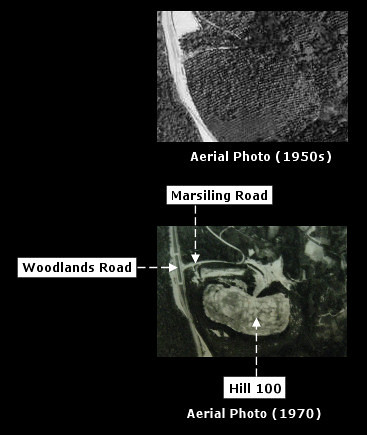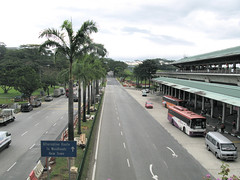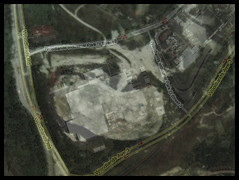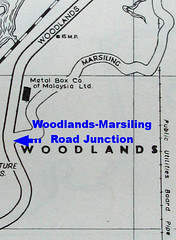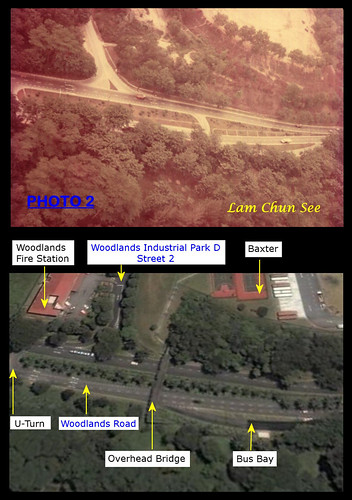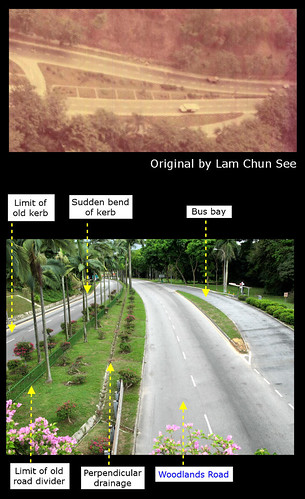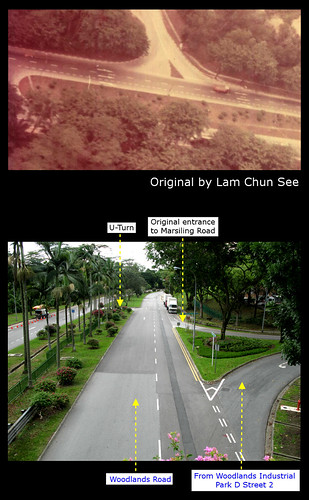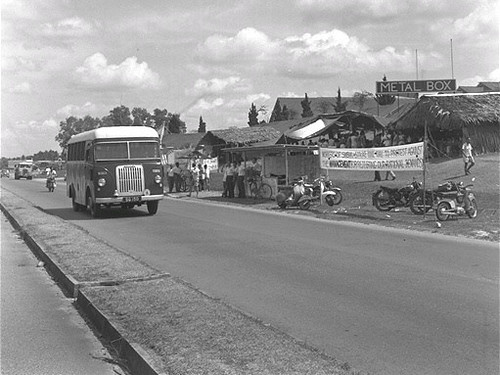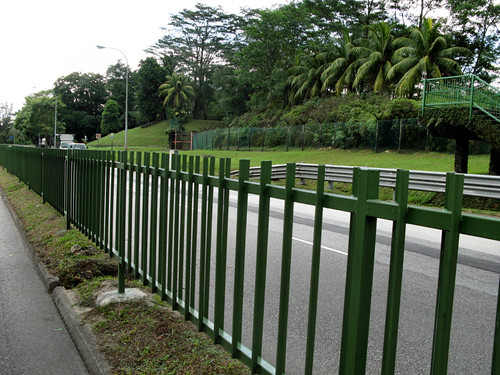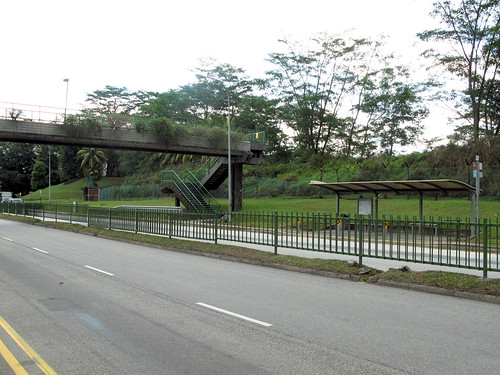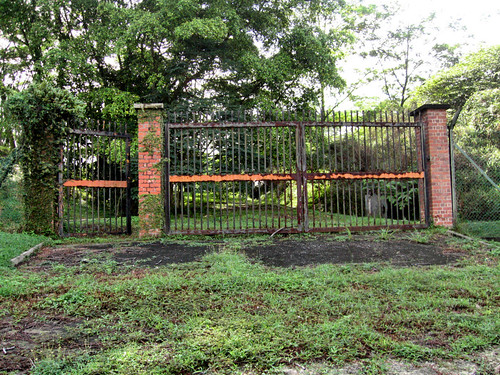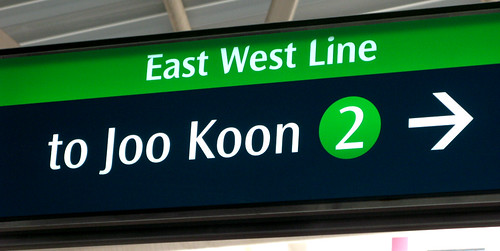
While I enjoyed myself at the
Open House as a non-paying passenger, that was not the purpose of my trip. A free train ride is nothing to shout about. My real purpose was to meet, for the first time, members from the
forum and to score goodie bags from the Open House. Now, a goodie bag is something to shout about because you only get it during special occasions – like an Open House.
I’m hoping I don’t sound cheapskate to you.So call my mission
Operation Goodie Bag(s). However I got more than what I bargained for, as you’d see….
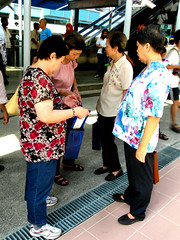
Alarm bells started ringing before the
official opening at 11am. You see, we reached
Pioneer Station before 11am to beat the crowd even though I didn’t expect much of a crowd. For goodness sake, this is not the Singapore Flyer where you
camp overnight to get free tickets. So imagine my surprise when I saw people ………… walking about
in the station!
Worse, there were people already leaving the station! Most of them were elderly folks. I’m guessing this must be some smart aleck’s idea to work with the various Residents’ Committee and Elderly Groups in the event the marketing campaign fails to attract visitors. It’s show time! Picture the scene where you have happy elderly citizens walking about when the guest-of-honour makes his appearance….
I applaud whoever’s idea for some elderly/retiree cohesion and Saturday morning workout. However, the decision to present the elderly with the much-sought-after goodie bag was a bad one. I thought I saw a SMRT memorabilia when some elderly aunties inspected the content in the bag (above picture). Bad choice. Bad bad choice. They probably dumped the content to the garang-guni a week after.

When we finally travelled up the
escalator, I realized we were not the
early birds. There was already a crowd in front of us as well as in the station.
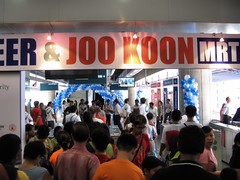
There was a
intimidating welcoming party (wearing LTA polo tees) behind the fare gates left open specially for the Open House. They were standing about
bua long long chattering with one another.
I’d prefer if they formed a line screaming and shaking their pom pom on my arrival - 欢迎欢迎, 热烈欢迎!It was here that I met and shook MP for Pioneer
Mr Cedric Foo’s hand. I think he looked a bit surprised when I addressed him Sir. If I’m not mistaken, he was the Minister of State for Defence before
Assoc Prof Koo Tsai Kee. Old habits die hard when you were a conscript.
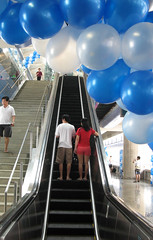
The Open House was that because you were allowed to walk around and take pictures indiscriminately. It was also a mini fun fair. You have balloons. You have
joy rides. Not to forget games.
Game booths were manned by LTA staff where for no fee, you could win fantastic prizes like a sticky pad. The games were pretty creative (and I mean this from the bottom of my heart). I’m not showing any pictures, see if you can visualize the game from its pithy description:
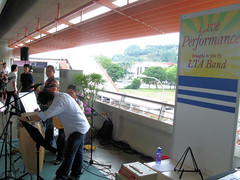
Kudos to LTA for trying to create some ambience with their Live Performance Band available at
Joo Koon Station only. A pity they had stopped playing when I was there. I guess the live entertainment was necessary to cheer the visitors up, who came from Pioneer Station and suddenly realized they were in the middle of nowhere. No visible entertainment or
F&B outlet. Joo Koon, between PIE Pasir Laba Flyover and AYE Benoi Flyover, is an industrial area in Tuas.
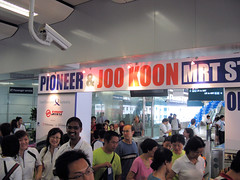

The people factor was what kept the Open House alive. I don’t mean the crowd but the eye candies. The above are
eye candies staff from LTA at Pioneer Station.
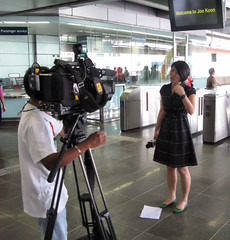
At Joon Koon Station, I had a bigger
catch surprise in the form of a TV reporter for Mediacorp’s
Channel 5 and
CNA. I don’t know her name.
Anyone can recognize her?
Nice dress but I’m more interested in the paper under her feet. No, she wasn’t littering. The
litter paper was her script. I’m not sure whether this is a common trick employed by reporters to hide their script.
I spent a fruitful Saturday morning at the stations – taking joy rides, watching the games but not playing them, shooting eye candies etc. But oh, where’s my goodie bag?
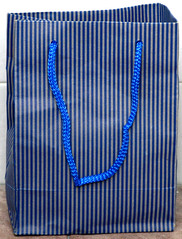
Due to unfortunate circumstances, I did not get the official goodie bag with the SMRT memorabilia. Instead I got a paper goodie bag. Do you want to know its content?
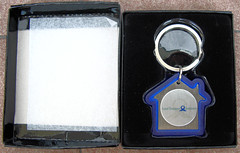
There was a LTA keychain that looked like excess inventory from HDB. So much for a SMRT memorabilia.
The Open House would be a laughing stock if the paper bag contained only the keychain. So to make the bag heavier they added something else….
Want to know what’s the additional object? Please don’t laugh when you see
this.
Kudos to the organizers!







